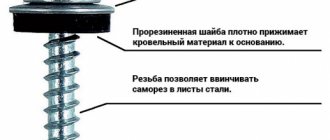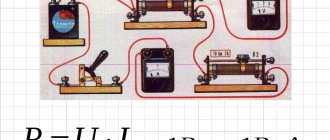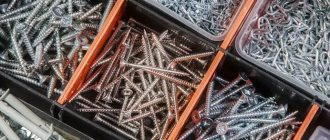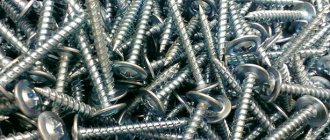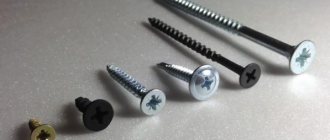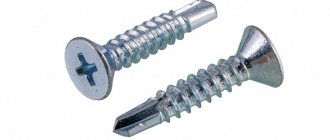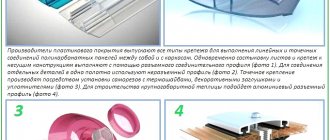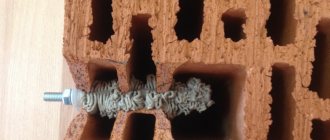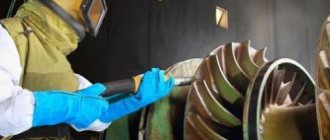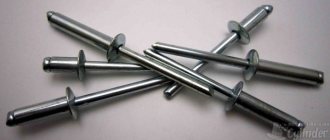Metal tiles have recently become one of the most popular roofing coverings. This article will talk about what kind of screws are used for metal tiles, as well as how to fasten sheets using these screws.
The main difference between a roofing screw is a washer equipped with an elastic seal. The color of the screws usually matches the color of the roof covering itself. Metal roofing is fastened using metal-to-wood or metal-to-metal screws.
Various screws
How many self-tapping screws are required for 1 m2 of metal tiles?
Most often, metal tiles are used as a finishing material in roof construction. But during installation, not only the features of its installation are taken into account, but also the location and number of screws for metal tiles.
This roofing material is very popular in Russia today. This is primarily due to the fact that metal tiles have such qualities as strength, low price and ease of installation.
The metal tiles are fastened to the sheathing using special self-tapping screws. They have a special structure. At the end they look like a drill that can easily pierce metal. A special washer located near the head ensures a tight fit of the fastener.
You need to know the order of the screws to use the required amount of material and more. And in order not to spend extra money on fasteners, you should know exactly in what order and quantity they are screwed into the profiled steel sheet. In addition, it is worth noting that you should not make unnecessary holes in the metal sheet. So how many self-tapping screws should you use per sheet of metal tile? To answer this question, you first need to choose high-quality fastening materials.
High-quality screws for metal tiles should not only quickly pierce the sheet, but also be securely fixed in the wood.
As you know, this fastener is made of metal, which is susceptible to the negative effects of corrosion. To avoid the development of these processes, the material is coated with an additional protective coating. Most often zinc is used for this. This element promotes reliable metal adhesion.
Modern manufacturers produce fasteners in a huge range of colors, so you don’t have to worry about them standing out on the surface of the roofing material. Some manufacturers immediately supply hardware of the appropriate shade as part of the finishing coat. Often such a product is considered high quality.
If the purchased metal tile did not come with a set of fasteners, they must be purchased separately. In this case, you should pay attention to the presence of markings on the cap. If it is missing, then this indicates low quality of the material.
Such fasteners are made of high carbon steel. Manufacturers provide a guarantee of 50 years of service. You can check them for the quality of the protective layer. To do this, you need to deform the cap with pliers. The galvanized layer should not peel off.
There are different sizes of hardware.
4.8 x 35 mm or 4.8 x 20 mm are used for mounting on wooden sheathing. Roofing screws 4.8 x 20 mm are used for fastening sheets of metal to each other in areas of complex geometric roof shapes. Together, where it is necessary to achieve particularly reliable fastening, self-tapping screws 5 and 7 cm long are used.
Features of metal tile coatings
A lot of roofing materials have appeared on sale, different brands and types. Developers choose coverage:
- by price;
- quality;
- strength;
- ease of installation.
Metal tiles made using metal technology are popular for arranging roofs:
- thin sheet steel, aluminum or copper;
- coated with polymer;
- profiled by cold pressure.
The finished plates are secured with a threaded steel screw. Self-tapping screws are produced with a special structure, similar to a drill, which pierces the metal base. They have a flat washer next to the head that secures the material tightly to the rafters. When roofing work is carried out, the placement and consumption of fasteners is determined. And roofers calculate how many screws per 1 m2 of metal roofing tiles will be needed. To avoid leaks, try not to damage metal surfaces with unnecessary holes. Screws perform 2 functions:
- pierce metal;
- are held firmly in the wood.
But the fasteners are made of an alloy, which, no matter how durable, is subject to corrosion. To prevent rust from destroying the screw, it is coated with a protective zinc agent. Due to the variety of colors of the tiles, the manufacturer began to produce hardware in different color tones, which is why they do not stand out from the general background. To enhance the tightness of the joints, self-tapping screws are made with polymer gaskets, which are placed on the rod near the head.
You need to choose a product from a reliable manufacturer if the gasket breaks and water gets into the gap, the metal begins to rust, and the wood begins to rot. One small screw can cause damage to the entire roof. Companies that produce metal tiles often complete their products with special self-tapping screws. If such a service is not provided, the developer himself selects the size. For wooden sheathing, 4.8 x 35 mm is suitable. When fastening metal sheets of complex configuration, hardware 4.8 x 20 mm is used.
Calculation of self-tapping screws
When designing a future roof, you should pay attention to every little detail, including the consumption of screws. If fasteners are used frequently, there is a high probability of leakage in the future. If you use a minimum of hardware, then the metal tiles will vibrate when there are gusts of wind, and this will lead to rapid destruction of the roof.
To correctly calculate the required number of screws, you need to know 2 parameters:
- Density of fasteners per 1m2;
- Roof area.
Sheets of metal are attached to the sheathing. In this case, the hardware passes at the bottom of the wave, which rests on the wood. Experienced builders know that under no circumstances should fasteners be passed along the top of the wave. Fastening of metal tiles in the area of the ridge and the outer part of the roof should occur in each wave.
At intermediate stages, hardware must be placed through the wave. In places of overlap, the interval between fastenings should be 1 meter along the sheathing. With an average sheathing pitch of 50 cm per 1m2, you need to use 7 screws.
Remember, properly secured finishing material can last a long time. The required number of fasteners should be used. They will ensure reliable fixation of the metal tiles.
Tools and materials for installation
When carrying out roofing work, it should be taken into account that they will be carried out at a fairly significant height and what seemed like a simple technological action on the ground will be very difficult to perform at a level of 5-10 meters.
Tools for installing metal tiles.
All tools used must be kept in a place where they will not fall and used only when necessary. If a hammer or screwdriver falls to the ground, you will have to go down to get it, wasting valuable time.
To work you will need a standard set of tools:
- tape measure for measuring the distance between screws;
- marker;
- hammer;
- electric screwdriver or drill with slow speed function;
- a tool for cutting metal sheets - a metal saw, an electric jigsaw or a carbide circular saw.
A little about metal tiles and self-tapping screws
This roofing material is extremely popular in Russia today. This is primarily due to its durability, low price and ease of installation. It competes only with flexible slate and its traditional asbestos-cement analogue.
The metal tiles are attached to the wooden sheathing with special self-tapping screws. They are noticeably different from other mounts in appearance. So:
- instead of the usual sharp tip, they have a drill that allows you to easily penetrate the metal of the roofing material;
- the cap has a hexagonal shape;
- It is also equipped with a rubber seal, which ensures a tight fit and tightness.
In order not to spend extra money on fasteners, you need to understand exactly in what order and quantity they are screwed into a profiled steel sheet. In addition, this allows you to avoid mistakes, in particular unnecessary holes, which are extremely difficult to repair.
Features of installing hidden fastenings
Metal tiles with hidden fastening have some installation features that must be taken into account. The fastening elements of such metal tiles are a self-tapping screw and a press washer. Since the system is designed in such a way that the fastening point is not visible from the surface (it is covered by the next sheet), screws made of galvanized steel can be used. It is not necessary to use fasteners whose caps are painted the same color as the metal tiles. The sheets are fastened to each other by engaging all the mounting protrusions and grooves located on the edges of the sheets. The place where the sheet is fastened with self-tapping screws is hidden during installation of the next sheet. Thus, there are no fastenings or through holes on the surface. This fastening makes it possible to create an ideal roof covering, characterized by absolute tightness. The service life of a metal tile roof with hidden fastening is very long.
Choosing high-quality self-tapping screws
The design of self-tapping screws created specifically for metal tiles allows them not only to easily overcome the resistance of steel, but also to be securely held in wooden structures. To prevent fasteners from rusting, a special anti-corrosion layer is applied to them at the plant. Most often, galvanic galvanizing is used - this method creates an almost indestructible bond between the top layer and the base.
All self-tapping screws are now produced in various colors that match the main palette supplied to the metal tile market. For this reason, their caps are almost invisible on the finished roof.
Most companies that manufacture the previously mentioned coating also produce self-tapping screws for it. These are the ones you should choose when purchasing everything you need for the roof. The thing is that only when using “original” products do companies provide a guarantee for the roof. Third-party consumables are grounds for refusal to fulfill obligations.
As previously noted, the tightness of the fastening is largely ensured by a rubber seal installed under the cap. Today, self-tapping screws are often supplied with polymer gaskets. By and large, the durability of the roof as a whole directly depends on the quality of this part. Cheap options are usually destroyed quite quickly by heat and dampness - as a result, water gets under the metal tiles and leaks appear. Moreover, excess moisture, falling on the unprotected end of the roofing material, leads to the formation of rust, which in just a few years can “eat out” a rather large hole in a seemingly new roof.
If you nevertheless decide to purchase fastening elements separately from the roofing material, make sure that the alternative ones are made of the proper quality. The manufacturer usually puts markings on good self-tapping screws, but cheap counterfeits do not have them.
Only high-carbon steel is used for the production of fasteners. And a certain number of them from each batch undergo mandatory and very thorough testing. Responsible manufacturers claim that the service life of their self-tapping screws is half a century.
The main indicator of fastener quality is the reliability of the protective layer. If you squeeze a bad screw with pliers, the zinc will peel off from it. A high-quality coating will remain in place.
The thickness of all fasteners for metal tiles is the same - 4.8 millimeters, but the length can be different. Supplied in particular:
The first two positions are used to fix the sheets to the sheathing. Longer ones are used where the most reliable contact is needed - along the edges of the roof, on the ridge, in the valleys.
Distinctive features of self-tapping screws for roofing
Self-tapping screws for metal roofing differ from ordinary self-tapping screws in that they have a special washer that has a seal.
In accordance with the expected structural load, self-tapping screws are divided into two categories:
- Metal-metal.
- Wood-metal.
Important: we do not recommend neglecting this classification of self-tapping screws and using them strictly for their intended purpose.
Many may argue that the screw washers will stand out on the roofing material, which will not add aesthetics to the roof.
We hasten to assure you that today on the market you can easily select any color of self-tapping screws that exactly matches the color of the metal tile.
Therefore, the use of self-tapping screws will not affect the aesthetics of the roofing.
The main function of self-tapping screws is to ensure tightness when installing the roofing.
In order for the tightness to be truly high, you need to purchase high-quality self-tapping screws; the manufacturer usually indicates special markings on their heads.
It indicates the type of screw.
In order for the self-tapping screw to perform its function 100%, it must be made of high-quality high-carbon or stainless steel. Also, the self-tapping screw must have an additional anti-corrosion stainless coating.
It is important to know: by using high-quality self-tapping screws, you will protect the places where metal tiles are fastened from the possible formation of corrosion and rust stains.
An equally important component of high-quality self-tapping screws is its seal - a rubber washer. Manufacturers with a positive image make such a washer from special EPDM rubber.
It has increased resistance to changes and temperature changes, and also has increased elasticity properties.
A little advice: when buying a self-tapping screw, do not hesitate to check its quality. To do this, check the tight fit of the rubber washer to the metal one. Do not buy self-tapping screws where the rubber washer comes off easily. Subsequently, this can lead to destruction of the rubber band; therefore, water will enter the place of attachment, and rusty smudges will form, and over time, local corrosion.
How to distinguish a high-quality self-tapping screw from a low-quality one? Squeeze the washer using pliers. If the self-tapping screw is of dubious quality, its painted surface will burst.
Manufacturers who value their name and reputation strictly test and control their products under a range of loads.
So, self-tapping screws are tested according to several parameters:
- Create a load by tilting the screw 5 degrees. Moreover, it must withstand 20,000 vibrations.
- When tilted by 10 degrees, the self-tapping screw must withstand 2000 vibrations.
- A 15 degree tilt implies the ability to withstand 100 swings.
A high-quality self-tapping screw withstands all tests with dignity, while the quality of its steel does not change.
Recently, many branded manufacturers of metal tiles have also supplied self-tapping screws. Only the use of original self-tapping screws entitles you to the manufacturer's warranty. On average, a roof made of metal tiles should last 50 years or more.
Number of screws per square meter
It should be understood that both too few fasteners and too many deteriorate the quality of the roof. In the first case, the sheets of tiles are held extremely unreliably and can fly away even if the wind is not too strong; in the second, an excess of holes leads to an increased risk of leaks.
To make the calculation you need to know exactly:
- size of the roof being built;
- number of screws per square meter.
Metal tiles are always attached in those places where its bends fit tightly to the wooden frame.
The fixation scheme is generally simple:
- sheets located on the edge of the roof and near the ridge are attached on the side adjacent to them in each wave;
- intermediate - through one bend;
- They are connected to each other through a meter, along the battens of the sheathing.
Thus, with a pitch of 45 cm, there are at least 7, maximum 10 pieces per square meter of tiles.
It should be borne in mind that this amount is calculated only for roofs of a simple configuration; for complex fastener designs, approximately one and a half times more will be needed.
Calculation of fastening material consumption
Each sheet of metal tile is attached with roofing screws to the wooden sheathing in the lower part, in the place of tight abutment.
To determine the required number of screws per sheet of metal tiles, it is possible to use the following calculation scheme.
- roof area – 150 sq.m;
- lathing made of boards with a section of 30 x 150 mm;
- slope length – 7.75 m;
- slope width – 10.2 m;
- required number of sheets – 40 pcs.
In this case, it is necessary to use all the above-mentioned sizes of screws (4.8 x 35 mm, 4.8 x 50 mm and 4.8 x 20 mm).
Self-tapping screws 4.8 x 20 mm.
For each side joint of the sheet, 21 screws are required, and for the total length of the joints (18 sheets) 378 pieces are required.
Self-tapping screws 4.8 x 35 mm.
Each inter-row joint is secured with six fasteners. In total, 20 sheets need to be secured, therefore 120 screws will be required.
Along the roof ridge and eaves, to secure one sheet of metal tile, you need 3 self-tapping screws. In total you will need 120 pcs.
To fasten the sheets along the end lines, you need 22 screws for each. Total quantity – 88 pieces.
Professionals advise attaching the sheet to the roof and in the center (5 screws are needed for one sheet of tile). For 40 sheets of tiles you will need 200 pieces.
The total consumption of self-tapping screws measuring 4.8 x 35 mm is 528 pcs.
Scheme of fastening metal tiles to wooden sheathing with roofing screws
Self-tapping screws 4.8 x 50 mm.
Taking into account the wavelength of the roof and the reliability of fastening, approximately 360 screws will be needed to fasten the end and cornice strips, ridges and other elements.
Adding up all the screws, we end up with: 378 pcs. + 528 pcs. + 360 = 1266 pcs.
Dividing the total number of screws by the total roof area, we get approximately 8 pieces per 1 square meter. m.
This calculation shows the theoretical consumption, but in practice the consumption may be slightly different.
Here are some principles that metal tiles require when installing them:
- Along the bottom edge, the sheet should be attached to the sole through one wave.
- The next row is fastened in a checkerboard pattern, in the same way through each wave. With a wider pitch, wind loads will cause the tiles to vibrate. Gradual deformation, knocking and noise of metal will be a reward for saving.
- The overlap on the sides of the sheet is attached to the crest of each wave.
- Fastening along the end plate should be carried out in increments of 50-60 cm.
- Special ridge screws for attaching the ridge strip are available for sale. They are marked accordingly. Fastening with such self-tapping screws is done through a wave.
- The principle of fastening through a wave is absolutely true for roofs made of any materials. It is time-tested and confirmed by many experienced developers.
In addition, when calculating the number of screws, the width of the profile purlins, the angle of inclination of the slopes and their shape, as well as snow holders, chimneys, windows, etc. should be taken into account.
How many self-tapping screws per 1 m2 of metal tiles are needed for roof installation
How many self-tapping screws are needed per square meter of metal tiles? This is the first question that arises among those who are actually going to install it. This is exactly what we will talk about.
Consumption of self-tapping screws per square meter
So, during the installation of such a popular roofing material as metal tiles, special fasteners are needed. So how many self-tapping screws are needed for 1 m2 of metal tiles ? As a rule, during work you will need approximately 6 screws for a given period, but this number can be increased to eight units, but exceeding this number is no longer recommended. At the same time, the roofing installer will no longer have to struggle with each individual screw, taking the most convenient position just to screw it in.
The fact is that during installation, a person screws in these same self-tapping screws, constantly being in one position. For example, you can use a ladder, because it is best to place the fasteners at the bottom of the wave of the metal tile sheet.
But why exactly this number of screws is required to fasten one square meter of material? It must be said right away that 6-8 pieces are used for standard-sized material, which is why exactly this amount is enough. But remember that based on the thickness of the steel from which the metal tiles are made, the number of screws should not increase.
A little about the specifics of the work
So, as mentioned above, the metal tiles are attached to the sheathing with special elements - self-tapping screws. They are placed precisely in the lower part of the sheet wave, which is in direct contact with the sheathing. Installation here is, although not so complicated, but it is simply impossible to do without following the rules. For example, it is worth knowing that the self-tapping screw should fit into the sheathing no more than a couple of centimeters. To do this, it is recommended to use self-tapping screws 28 millimeters long. Why exactly this size? Yes, because it is precisely this that allows you to create the reliability and strength of fastening the sheet, without going beyond the standard sheathing, which is usually made from 20-25 boards.
It turned out that for one square meter of metal tiles you will need from 6 to 8 self-tapping screws of a special length. And finally, I would like to say that in order to obtain a reliable, high-quality and durable roof, installation should be carried out strictly following the rules!
Sequence of fastening metal tiles
Metal tiles are a very popular roofing material, the main differences of which are their light weight and variety of colors, shapes and sizes. It consists of a fairly thin sheet of metal coated with a protective polymer layer. The material is given rigidity due to the presence of shaped elements - they prevent the roof from bending under the influence of natural factors.
Before starting installation work, care should be taken to prepare the base - the sheathing. It is made from wooden planks, and the construction of the sheathing can be quite light, because the weight of the roof will be small. The pitch between the horizontal strips should be chosen so that it is a multiple of the size of the metal tile sheets. For example, with a roofing material width of 1000 mm, the sheathing pitch will be equal to 500 mm - this ensures that one sheet is simultaneously attached to three planks.
https://www.youtube.com/watch?v=Cp5O0W3ADSo
To screw in self-tapping screws, you can also use a regular screwdriver, but if there is a large amount of work, it is better to get an electric screwdriver. The screw is pressed against the bottom of the wave of the metal sheet and screwed into the material until the thin metal head begins to deform slightly. This serves as a sign that the fastener is installed correctly, and the rubber gasket is pressed tightly against the surface, ensuring a complete seal.
How to choose high-quality fastening material
On a high-quality roofing screw, when the washer is compressed with pliers, the paint should not burst, and the rubber gasket should fit tightly on the metal.
To select high-quality self-tapping screws from the huge number of materials offered on the construction market, you need to select products with markings in the form of a brand, which is applied to the head by the manufacturer. High-quality self-tapping screws must have a rubber gasket that fits tightly to the metal washer.
As a rule, inexpensive self-tapping screws have gaskets made of low-quality rubber, which will lose elastic properties and crack as a result of temperature changes over several seasons. This, in turn, will lead to leaks or rusty spots around the fastening points.
In order to choose a quality product, you need to compress the washer using pliers. On a good self-tapping screw, the paint should not burst, and the rubber washer (EPDM) should continue to sit tightly on the metal.
Modern manufacturers of high-quality metal tiles or corrugated sheets often also include fasteners in the delivery package of their products. In this case, all warranties provided for this material are valid only when only branded screws were used for fastening.
What are roofing screws
A mandatory requirement for roofing screws is an anti-corrosion coating with special powder paint.
As a rule, the production of self-tapping screws for roofing is made from alloyed stainless steel. A sheet with a broken structure around the hole made is directly dependent on the quality of the steel and the sharpening of the screw tip.
Roofing screws for metal tiles must have an anti-corrosion coating with a special powder paint. Self-tapping screw caps can have different colors.
You can choose the color of the screws to match the color of the roof and their presence will be invisible even from short distances. Along with this, the color coating additionally increases the anti-corrosion properties of the metal.
The strength characteristics of steel are no less important than high-quality anti-corrosion coating. Gusts of strong winds place loads on each sheet of metal tiles, and, accordingly, on the fastening elements, much higher than permanent loads. Manufacturers of quality products must take this into account when specially testing products to achieve the required results. A good roofing screw must withstand the following loads:
- 20 thousand vibrations at a tilt of 5 degrees;
- 2 thousand vibrations - 10 degrees;
- 100 vibrations - 15 degrees.
Tips for securing metal tile sheets
All lower edges of the metal tile are fixed with self-tapping screws into the base of the wave. Next, the screws need to be screwed in in increments of two waves, and it is better to place the fastening places of the screws in the rows in a checkerboard pattern.
It is worth considering that after laying the side sheet of metal tile overlapping, screw the screws into the ridge from each wave. Secure the end strip with self-tapping screws at intervals of 50-60 cm. Fix the ridge strip with special self-tapping screws for ridges through each wave of the metal tile.
determine the number of screws for metal tiles after creating a roofing project, when all the dimensions and volume of the roofing covering are available, and all complex elements of the frame structure are taken into account.
Remember that by purchasing high-quality fasteners, you will receive a reliable, powerful roof that can serve you for decades.
Consumption of self-tapping screws per 1m2
In this way, a special mount is mounted on the metal tile for installing the solar panel on the roof
How many self-tapping screws are needed per square meter of metal tiles? When installing metal tiles , as a rule, you need to screw in 6 to 8 screws per m². The builder does not have to occupy a comfortable position on the roof in order to screw in each individual screw.
The installer must screw in the screws from one position, for example, from a ladder, with one hand, since attaching metal tiles to the lower part of the wave is very convenient and, if considered from a technological point of view, has the smallest chance of defects.
But attaching it to the top of the wave is quite a difficult job. In this case, the self-tapping screw with its tip goes completely through the metal tile and only after 2.5 - 5 cm is screwed into the wooden sheathing. The difficulty is that the roofer, using a screwdriver with a self-tapping screw on it, must look for the sheathing by touch.
It is worth noting that fastening the roof to the top of the wave is a fairly common mistake, but not fatal. You definitely won't have to redo the work. The consequences of such an error are noise resulting from the impact of the roof on the sheathing during strong gusts of wind.
Self-tapping screw connecting metal tiles to a wooden rafter system
The main thing is not to purchase self-tapping screws from unknown manufacturers, since they are unlikely to be able to offer you high-quality products. The optimal price for one roofing screw is 2 rubles.
Roofing screws for metal tiles
A roofing self-tapping screw is a galvanized screw that has a hexagonal head, a sealing head with a vulcanizing layer, a washer and a drill, which is the tip of the self-tapping screw.
The photo shows several types of screws for metal roofing
The disruption of the metal structure around the hole produced during drilling will depend on the sharpening of the tip and the quality of the steel. It is very important to buy high-quality self-tapping screws, since their service life must coincide with the “shelf life” of the roofing.
To protect galvanized mounting bolts from corrosion, their surface must be coated with special powder paint. Typically, the head of the self-tapping screws has a colored coating, which allows them to be used for a wide variety of metal tile colors.
Consumption of self-tapping screws per sheet
Consumption of screws for metal tiles, in general, and how many screws are needed for one sheet of metal tiles.
In order to understand how many self-tapping screws you need to spend on one sheet of metal tiles, you need to use a special calculation formula.
For example, your roof is 150 m², and the sheathing consists of boards whose cross-section is 30X150 mm. The width of the ramp is 10.2 meters and the length is 7.75 meters.
The photo shows one of the most popular types of metal roofing tiles
The total number of sheets you need to attach is 40 pieces. In this case, you need to use self-tapping screws with dimensions of 4.8x20, 4.8x35 and 4.8x50.
Let's calculate how many screws we need for each element and everything in general:
- In order to secure the joints between the rows, you will need about 6 fasteners for each joint, and this is a total of 120 screws.
- For the entire length of the side joints between the roofing sheets, it is necessary to spend 21 screws on each joint, which results in 378 pieces, the size of which is 4.8x20.
- To attach the roofing sheets along the mowing line of the eaves and the mowing line of the ridge at the rate of 3 screws per sheet of metal tile, you will need 120 pieces.
- 88 pieces in total to fasten the end of the mowing line, where they usually use 22 screws per end line.
READ How to properly lay coniferous underlayment under laminate
In order to secure the ridges, cornice and end strips, and other elements, you will need 360 fastening bolts, taking into account the reliability of the fastening and the wavelength of the roof. So, in order to cover a roof of the specified size you will need 1266 screws.
